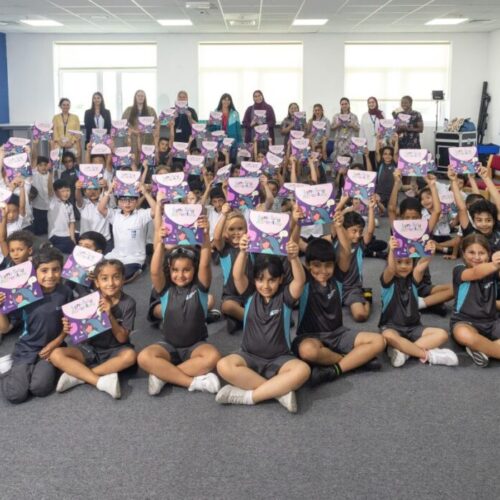Supporting parents and children to navigate collective stress
In times of shared trauma, parents need tools to help children navigate emotions. Dr. Lauren Smith, Clinical Psychologist, Child, Adolescent and Family Specialist at Sage Clinics, shares insights on creating a safe space, honest communication, and supporting individual reactions.

As human beings we exist within social and community networks, often seeking out emotional connections and social support to develop a sense of belonging. These bonds are essential for our emotional well-being and can help reduce feelings of loneliness, depression, and anxiety. Collective Stress refers to the psychological and emotional distress experienced by a community, society, or group because of a shared traumatic event or series of distressing experiences.
Whether we experience these events firsthand, see or hear about the impact they are having on loved ones or read about them in the news or social media, it can be difficult for parents to process and make sense of these situations whilst also trying to support your children in doing the same.
Young people often experience a range of strong emotions such as fear, sadness, anger, and confusion. Some children may be able to vocalize their feelings and concerns while others may convey distress in their behavior, such as having difficulty separating from parents, acting out events through play and repeatedly asking questions. Young people will look to their parents and trusted adults to help them understand the severity of the situation and how to make sense of what is happening for them and the wider community.
While it may feel intuitive to try and protect young people by minimizing the magnitude of the event and providing reassure that everything is ok, the first step in creating a safe space for them is to validate their emotions and responses in a non-judgmental way. Answer their questions in a simple and honest way, tailoring information to the young person’s developmental age and considering what is appropriate for them to learn, see and hear. Younger children may need simpler explanations, while older children can engage in more complex discussions. Encourage them to express their feelings in a way that feels comfortable for them, such as art, writing or other creative means.
Limit their exposure to graphic images, as these can feel frightening and traumatic. Adopt a curious stance and create opportunities to have conversations, thinking about what thoughts they may be having and how they might be feeling (both physically and emotionally) when they hear about these distressing events.
Empower young people to engage in activities that might help, such as participating in local initiatives and writing letters to give them a sense of purpose and agency.
Remember, every young person is unique, and their reactions to collective stress will vary, much like ours do as adults. It’s important to be patient and understanding as you provide support, and to adapt your approach as needed to meet the young person’s individual needs. It’s also important to be mindful of your own reaction to collective stress and the support that you need to manage your own response for yourself, and to enable you to continue to support your child with their own response. This can take on many forms, and there is no single suggestion that will work for all.
Some suggestions include being mindful of the information you are consuming and the impact this is having on you. You may want to consider how often you are reading the news or checking social media. Is there a balance to be had between staying informed without feeling constantly confronted with highly distressing information.
Try to continue to engage in things that you know are helpful for your physical and mental health such as exercise and seeking connection and support from your own support networks.












Comments